#India ADAS Market
Explore tagged Tumblr posts
Text
India ADAS Market Growth, Analysis, Report 2022-2029
BlueWeave Consulting, a leading strategic consulting and market research firm, in its recent study, estimated the India automotive advanced driver assistance systems (ADAS) market size at USD 1.19 billion in 2022. During the forecast period between 2023 and 2029, BlueWeave expects the India ADAS market size to grow at a significant CAGR of 18.81% reaching a value of USD 3.34 billion by 2029. Major growth drivers for the India ADAS market include the growing focus on passenger well-being and safety, coupled with governmental mandates for safety features. Notably, the surging popularity of autonomous and semi-autonomous vehicles contributes to market expansion. Beyond safety, ADAS technology provides various advantages, such as improved traffic awareness, lower insurance costs, reduced maintenance expenses, and enhanced fuel efficiency. This growing adoption of ADAS is expected to fuel market growth in the foreseeable future. Also, ADAS technologies have the potential to address India's pressing issue of road accidents, with the country currently holding the unfortunate record of the highest global road accident fatalities, averaging 415 deaths daily, as reported by the World Health Organization. ADAS systems can play a pivotal role in reducing this alarming statistic by aiding drivers in vehicle control and accident prevention. However, high cost of ADAS systems and poor road infrastructure are anticipated to restrain the overall market growth during the forecast period.
India ADAS Market – Overview
The India ADAS (Advanced Driver Assistance Systems) market denotes the industry and market sector in India dedicated to developing, manufacturing, and implementing cutting-edge technologies and systems aimed at bolstering vehicle safety and driver support. These systems typically incorporate functionalities like adaptive cruise control, lane-keeping assistance, collision avoidance, and other innovations designed to enhance road safety, reduce accidents, and elevate the overall driving experience. Also, the India ADAS market encompasses the entire process, from the production to the integration of these systems into vehicles, and it's influenced by a blend of regulatory mandates and consumer-driven factors. In essence, the India Advanced Driver Assistance Systems (ADAS) market pertains to the domain of technologies and solutions that not only boost vehicle safety but also enhance driver comfort. These solutions encompass features such as lane departure warnings, adaptive cruise control, collision mitigation, and automated parking. ADAS technologies utilize sensors, cameras, and other advanced systems to empower drivers in controlling their vehicles and preventing accidents.
Sample Request @ https://www.blueweaveconsulting.com/report/india-adas-market/report-sample
Impact of COVID-19 on India ADAS Market
COVID-19 pandemic adversely affected the India ADAS market. Lockdowns, supply chain disruptions, and reduced vehicle production negatively impacted the installation of ADAS systems. Economic uncertainties and reduced consumer spending power also hindered the adoption of these advanced technologies. However, the pandemic highlighted the importance of safety and hygiene, potentially driving greater interest in ADAS features like touchless controls and autonomous driving. Overall, while COVID-19 initially posed challenges to the India ADAS market, it also created opportunities for innovation and adaptation as the automotive industry sought to recover and respond to changing consumer preferences.
India ADAS Market – By Sensor
By sensor, the India ADAS market is divided into Ultrasonic Sensor, Infrared (IR) Sensor, Radar Sensor, Laser, Image Sensor, and LiDAR Sensor segments. The Radar sensor segment holds the highest share in the India ADAS market by sensor. Radar sensors excel in various environmental conditions, such as fog or heavy rain, which are prevalent in parts of India. They offer crucial functionalities like adaptive cruise control and collision avoidance by accurately detecting surrounding objects, vehicles, and pedestrians. Additionally, their longer detection range and ability to work in low visibility conditions make them a preferred choice. As a result, the Radar sensor segment is widely adopted, offering essential safety and convenience features, and thus holds the highest share in the India ADAS market.
Competitive Landscape
Major players operating in the India ADAS market include Bosch Limited, Magna International Inc., WABCO India Limited, ZF Friedrichshafen AG, Denso India Pvt Ltd, Valeo India Pvt Ltd, Autoliv India Pvt Ltd, and Continental Automotive India Pvt Ltd. To further enhance their market share, these companies employ various strategies, including mergers and acquisitions, partnerships, joint ventures, license agreements, and new product launches.
Contact Us:
BlueWeave Consulting & Research Pvt. Ltd
+1 866 658 6826 | +1 425 320 4776 | +44 1865 60 0662
0 notes
Text
How Many Electric Car Brands Are There in 2024?
The electric vehicle (EV) revolution has accelerated rapidly in recent years, transforming the automotive landscape. With growing environmental concerns and advancements in technology, 2024 marks a significant year for the proliferation of electric car brands. Understanding the current landscape of these brands is crucial as they play a pivotal role in shaping the future of…
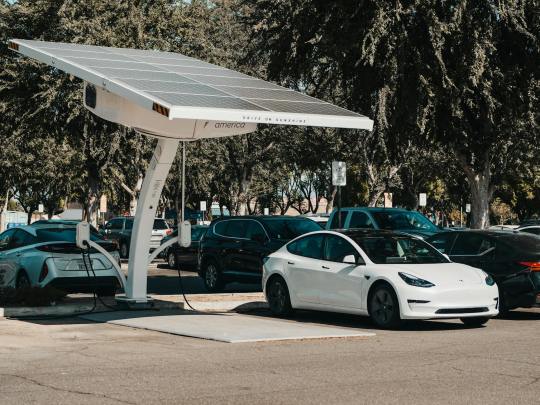
View On WordPress
#2024 trends#ADAS#affordability#Arrival#autonomous driving#battery technology#BMW#Brazil#BYD#car sharing#charging infrastructure#consumer trends#diverse vehicle options#eco-friendly materials#economic growth#electric mobility#electric vehicles#emerging markets#emission reductions#EV Market#fast charging#Ford#Government Incentives#green manufacturing#India#Infotainment#innovation#international collaboration#Lucid Motors#NIO
1 note
·
View note
Text
K-drama review: Gaus Electronics (2022)

Lucu banget euy ini sitcom :”) ceritanya ringan banget, dinamika antar tokohnya lucu banget, dan tentu ada cinta-cintaannya.
Ceritanya fokus di Marketing Team 3-nya Gaus Electronics, perusahaan konglomerat kaya Samsung gitu - ini tim underdog banget deh sangat disepelekan dan isinya kayanya ampas-ampas perusahaan gitu. Huhu. Tokoh utamanya adalah Sang Shik (Kwak Dong Yeon), pegawai penuh semangat yang dudul aja gitu dan clumsy berat. Dari awal dia udah bener-bener kayak Tom n Jerry sama Na Rae, sunbaenya yang bener-bener bersumbu pendek dan selalu emosi ke Sang Shik.
Na Rae baru pindah apartemen dan ternyata unitnya persis di sebelah Sang Shik, jadilah ada banyak momen-momen yang bikin mereka jadi makin deket. From enemy to lovers trope yang rapiiiii banget. Sangat-sangat alami, nggak maksa, dan tentunya menggemaskan. Love banget sama kedudulan Sang Shik yang sangat sangat adorable.
Meskipun main plot line nya adalah hubungan Sang Shik - Na Rae, tapi plot-plot lainnya juga gak kalah lucu. Ada Baek Ma Tan si anak konglo rival Gaus yang soksokan mau memulai karir dari awal untuk membuktikan dirinya - si Manager Gi ngira ni anak saking miskinnya sampe gak pernah makan makanan Korea pada umumnya, padahal ya dia emang kerjanya makan makanan Barat yang fancy :( Hubungan Ma Tan sama Kang Mi yang hidupnya beneran ngepas juga lucu banget - Ma Tan banyak belajar dari dia.
Belakangan ini nonton drakor banyaknya yang serius-serius terus, sekali-kali nonton series tanpa mikir gini rasanya menyenangkan banget. Di series ini juga banyak banget sebenernya konflik-konflik kehidupan keseharian maupun konflik tempat kerja, cuma ya sama semua orang dibawa ringan aja. Gak semuanya harus dibawa pusing! Kayak pas Sang Shik udah serius banget apply program rotasi ke India, terus pas dia nanya ke bosnya, si bosnya malah bilang bahwa pas perusahaan tahu yang daftar cuma Sang Shik, jadinya si program itu ditiadakan 🤣🤣🤣🤣 Terus yaudah, plotnya lanjut, nggak ada adegan Sang Shik mengajukan banding atas ketidakadilan ini.
Life goes on. Shit happens. Just keep moving!
Terus kayaknya series ini kalo ditonton sama native speaker Korea kayanya akan jauh lebih lucu deh karena banyak nama dan becandaannya itu plesetan. Tapi salut banget deh sama translator-nya Viki yang selalu memberikan konteks di setiap plesetan/jokes-nya :’)
Satu eps nya cuma 40-an menit dan cuma ada 12 episode jadi nggak sampai 6 jam di akhir pekan kemarin semuanya sudah kutonton habis. Hehe.
Sungguh tontonan yang menyenangkan 💕💕💕💕💕

7 notes
·
View notes
Text
Top 7 Cryptocurrencies To Buy In India In April 2023

If you’re considering investing in cryptocurrencies in India, you’re in luck. As of April 2023, the crypto market is heating up, and there are several great options available for investors. Here are the top 7 cryptocurrencies to buy in India this month:
Bitcoin (BTC): As the world’s first and most well-known cryptocurrency, Bitcoin remains a popular choice among investors. It has a market capitalization of over $1 trillion and is widely accepted as a form of payment. In India, Bitcoin is widely available for purchase through exchanges like WazirX and CoinDCX.
Ethereum (ETH): Ethereum is the second-largest cryptocurrency by market cap and is known for its smart contract capabilities. It has a robust developer community, and many other cryptocurrencies are built on its blockchain. Ethereum is also widely available for purchase in India through exchanges like CoinSwitch and ZebPay.
Binance Coin (BNB): Binance Coin is the native cryptocurrency of the Binance exchange and is used to pay for trading fees on the platform. It has seen significant growth in the past few years and has a market cap of over $100 billion. BNB is available for purchase on several exchanges, including Binance and WazirX.
Cardano (ADA): Cardano is a blockchain platform that aims to provide a more sustainable and scalable solution than existing cryptocurrencies. It has a market cap of over $70 billion and has gained a lot of attention in recent months. ADA can be purchased on exchanges like CoinDCX and Bitbns.
NavC token (NavC): NavC is an ERC-20 utility token designed to serve as the native cryptocurrency of the NavExM trading ecosystem. NavExM is a positive cashback centralized cryptocurrency exchange that provides trading and investing in crypto, NFT, and stablecoins.

Dogecoin (DOGE): While not taken as seriously as some other cryptocurrencies, Dogecoin has a large following and has seen significant growth in recent years. It started as a joke, but it has gained a lot of attention from the likes of Elon Musk and other high-profile figures. DOGE is available for purchase on several exchanges, including WazirX and Bitbns.

In conclusion, investing in cryptocurrencies can be a risky business, so it’s essential to do your research and understand the risks involved. However, with the growing popularity of cryptocurrencies in India, nowycould be an excellent time to get involved. The top 7 cryptocurrencies to buy in India this month are Bitcoin, Ethereum, Binance Coin, Cardano, NavC, Dogecoin, and Solana. Good luck with your investments!
2 notes
·
View notes
Text
3 Negara - Singapore Malaysia Thailand

Tertanggal 8-13 Maret 2023, kembali mengukir guratan cerita pada laman kosong yang haus akan petualangan. Malam itu ada di suatu penginapan di Malaysia setelah melewati imigrasi darat Singapore. Berbagi kamar dengan seorang penulis asal NTT yang saat gambar ini diambil ia sedang asik mandi di belakang. Malam itu tidak selesai disana, rapat demi rapat masih terus dilakukan ditengah gempuran labil dan kenikmatan melihat pemandangan.
Sekedar sharing. Berikut cerita seorang wanita bagian 3 pada perjalannya mengisi paspor. Hanya untuk rekam jejak, tidak perlu teman-teman sekalian baca. Sekedar mengisi waktu menulis untuk suatu hari mengenang masa lalu yang patut untuk dirindukan.
Rabu, 8 Maret 2023

Perjalanan tidak dimulai pada tanggal tercantum. Penulis telah memasuki kendaraan bernama bus Sby-Bgr semenjak tanggal 6 maghrib silam. Ia menuju Parung, Bogor, Jawa Barat untuk menginap pada temannya yang begitu keren. Selepas itu pukul satu dini hari penulis beserta dua orang lainnya menggunakan jasa grab tetangga temannya untuk menuju bandara CGK Tangerang. Pagi itu cukup krusial, tidur hanya satu jam saja tidak menyurutkan niat untuk melanjutkan perjalanan.

Tepat pukul 7 WIB penerbangan dilancarkan. Apa kalian pernah merasakan candu, saat mengalami sesuatu dan berharap sesuatu itu dapat kita rasakan sesering mungkin dengan performa kuat serta bertajuk menyelesaikan tanggung jawab? Penulis bahkan sempat keram sebentar. Jendela pesawat saat tengah melaksanakan tugasnya selalu menampilkan sesuatu yang sangat menakjubkan.

Di Singapura masih pukul 10 lebih (takaran WITA). Penulis dan tim menuju Jewel untuk melihat keindahan dunia buatan bernama air terjun imitasi dengan riasan chapter 100th Disney. Beruntungnya, saat itu ku dapat melihat langsung air itu dinyalakan tepat pukul 11.
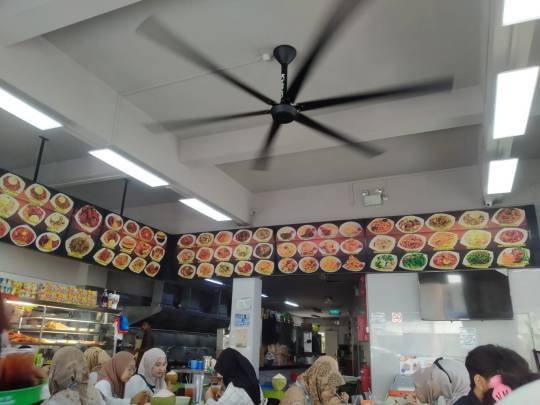
Makanan di Singapura ternyata tidak semuanya berporsi kecil. Sebelum study campus visit sempat mampir untuk makan siang. Porsi makanannya ternyata sebesar di resto Malaysia. Paha atas dan paha bawah utuh bumbu ayam apa ya akupun tak tahu, nasi, sayur dan kuah random. Tentunya karena resto ini milih pedagang bangladesh (wajahnya seperti masyarakat India), makanan ini terjamin halal. Rasa? Dahlah enak bangettt.
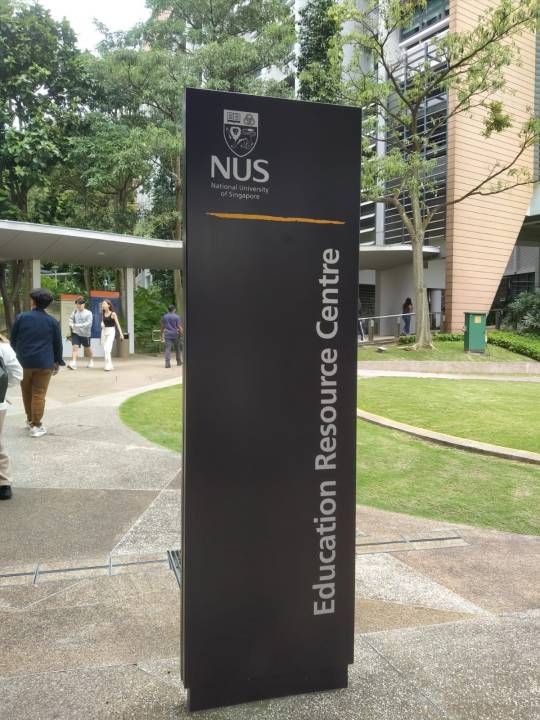
NUS! Sebelum kemari untuk yang kedua kali, ku sempet agak menyesal karena tidak solo tour buat lihat lebih jauh tentang bangunan-bangunan di kampus ternama ini. Alhamdulillah meski tidak sempat masuk ke ruang kelas, cukup puas bisa mengintip bagian belakang kampus dan cerita-cerita dari mahasiswa sana. Eh, fyi orang sini alias mahasiswanya sangat nerdy alias pinter banget. Vibesnya tuh udah kaya mereka selalu fokus dengan target, pokoknya dah kalangan atas banget. Sempet juga mampir market kampusnya buat lihat-lihat souvenir sajah.

Merlion meski masuk awal sore selalu ramai. Akhirnya ku memutuskan untuk jalan di jembatan panjang sebelah kiri. Melihat langit langsung awan dengan angin “laut” sore itu begitu memukau. Sempat lihat dari jauh orang jualan di daerah sekitar situ.
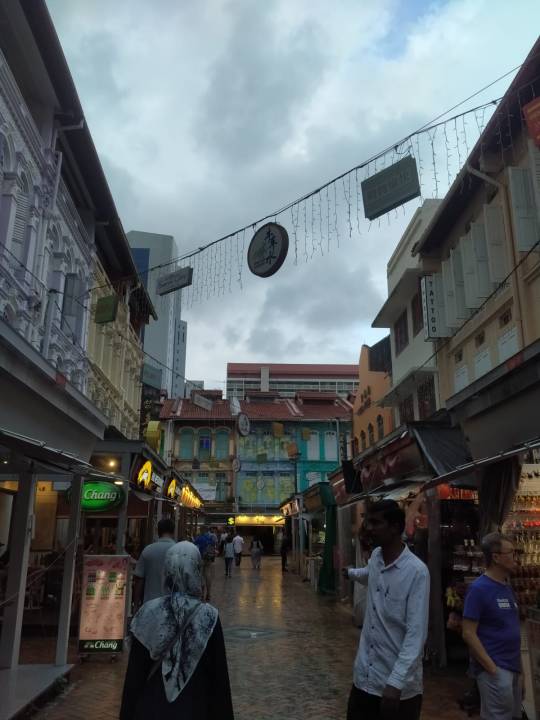
Singapore juga punya China Town. Sore itu agak sedikit gerimis. Sayangnya di lokasi ini ku tidak sempat lihat toko kanan kiri karena terlalu fokus digiring ke satu lokasi. Sempat lihat palang menu toko sebelah. Tahu ga, sebagai seseorang yang jarang tau tentang apa itu minuman keras, disini dijual ternyata. Yah bisa dipastikan disini mungkin bakal susah cari yang halal.

Ini foto salah satu menu resto yang kulewati. Saat itu satu dolar setara 10.500 rupiah. Bisa dibayangkan ya bagaimana kurs rupiah dan persiapan untuk sangu kala teman-teman mau mampir ke negara ini.

Garden by the bay kalau sore kelihatan banget akar-akarannya. Ini menjelang malam si lebih tepatnya. Kata google, ada sore entah menjelang malam jam berapa juga ku belum riset, lampu-lampu di akar itu akan menari sesuai musik yang mereka putar. Mungkin suatu hari ya bisa lihat atraksinya insya allah.

Universal Studio sedang ada perbaikan, beberapa lapis bagian kena sekat jadi tidak seleluasa itu untuk eksplor. Disini ku tidak main, berputar saja untuk menikmati arsitekturnya yang tentu luar biasa cantik. Sebelum hari berganti, kami segera melewati imigrasi Singapore dan imigrasi Malaysia jalur darat untuk sampai ke penginapan sesuai jadwal.

Kiranya seperti ini tampak lobby utama penginapan yang kami tempati.
Kamis, 9 Maret 2023

Rumah Merah Melaka, Malaysia. Disini ada yang jual ais krim abcd! Ada juga becak goes mirip sih, bentuknya unik. Di seberang kanan ada danau hijau cantik yang saat itu bertepatan banget ada kapal kecil mengangkut turis sedang lewat. Kanannya lagi ada lokasi kaya China Town gitu tapi bukan, ada patung emas kelinci besar ngga sempat kefoto. Makan siang juga daerah dekat sini, menunya dah Malaysia banget, pasti halal kalau disini.

Tau ga sih, di Putra Jaya ada hidden gems-nya! Jadi tampak depan agak jauh, preview masjid itu akan terlihat seperti ini. Lihat sebelah kiri ada eskalator turun. Nah dibawah sana ada toko cokelat murah yang masih sepi. Dijamin murah disini dari pada ikut tour guide buat beli di toko khas oleh-oleh.
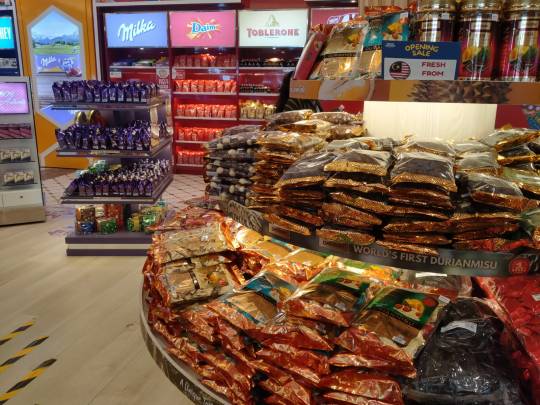
Ploting barangnya nyaman banget buat belanja. Rasanya ada macem-macem dan sayangnya toko ini ga semua orang tahu. Denger-denger toko ini baru buka beberapa bulan gitu, ga sampe satu tahun.
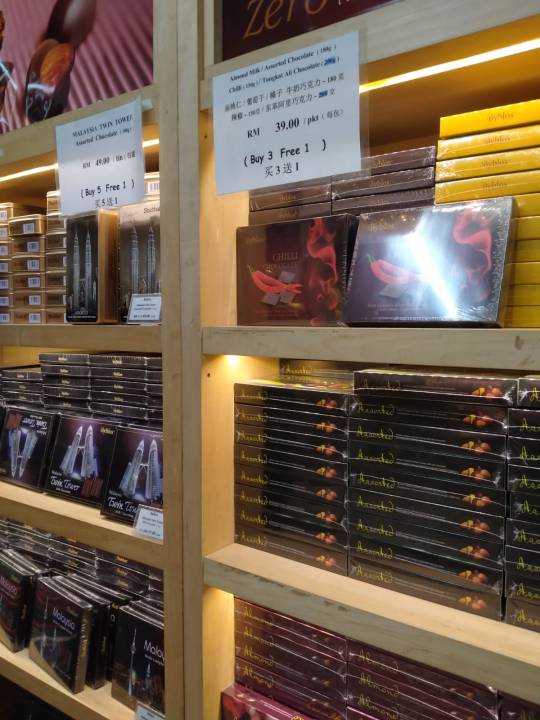
Peringatan, untuk siapapun kalian yang belanja ke apa ya lupa namanya kampung cokelat kayaknya, disini salesnya banyak. Varian rasanya banyak. Ada testernya. Harganya akan lumayan murah jika kalian beli secara berkelompok. Boleh dipilih dulu deh. Tapi emang si enak-enak. dan tentunta “tidak ramah kantong”.

Akhirnya kami selesai dengan kericuhan belanja sore itu dan kembali ke next penginapan.
-- Part 2 tidak ada
2 notes
·
View notes
Text
Celebrating India’s EV Journey
Today is World EV Day. The day is observed every year with special awareness campaigns being organized globally to educate people about the benefits of electric vehicles.

While China is the world’s largest EV market, India is the second largest and most promising. Driven by incentives by the Centre and the states, the adoption of EVs is gaining momentum. India’s EV sector is attracting increasing investments in battery technology, charging infrastructure and product options. Some of the biggest brands in the EV space include Tata Nexon in cars, the Mahindra Treo in three-wheelers and Hero Electric and Ola in scooters. In addition, there are a whole lot of startups that are working on various aspects of the EV eco-system.
In this article, Autocar Professional takes you through India’s EV landscape with leaders in the segment commenting on sustainable mobility and a zero-emission future.
Meanwhile, a recent study by Castrol study has highlighted key insights on EV readiness for markets, carmakers, and consumers. Its global survey ‘Switching ON the rEVolution’ covering 10,000 consumers and 100 leaders from car manufacturers in 10 key global markets, including India suggests that 44 percent of consumers surveyed in India are considering an EV for their next vehicle purchase while 55 percent are still considering an ICE vehicle.
Shailesh Chandra, MD, Tata Motors Passenger Vehicles and Tata Passenger Electric Mobility

World EV Day is indeed a special day for us, as we look back and reflect on our journey so far. We are proud to lead the EV market in India, with a lion’s share of 88 percent. As early entrants, we have shaped the market and seen it grow with Nexon EV and Tigor EV. We have over 40,000 Tata EVs plying on road. We have also established Tata UniEVerse, a one of its kind EV ecosystem, which is further propelling the EV adoption.
Santosh Iyer, VP-Sales & Marketing, Mercedes-Benz India

Mercedes-Benz Indian has a very aggressive EV roadmap for the Indian market with three new luxury EVs. We pioneered luxury EVs in India with the EQC in 2020, which received good response from the early adopters in the luxury segment. EQC’s acceptability and market success set the ground for other brands to foray into the luxury EV segment.
Suman Mishra, Mahindra Electric Mobility

We celebrate India’s electrification journey. At Mahindra Last Mile Mobility, we are committed to promoting sustainable motoring with zero emission products. I am confident that with our collective efforts, we can enable a green and smarter tomorrow for India.
Warren Harris, CEO, Tata Technologies

Tata Technologies’ vision of Engineering a better world embodies our commitment to providing sustainable solutions especially in the rapidly growing Electric Vehicle Market. The transition to EV is also an opportunity and would also be synonymous with a move to connected vehicles enabled by ADAS and digital customer experience solutions. Tata Technologies offers end-to-end solutions for engineering, manufacturing support, and customer experience solutions for EVs globally. We have developed an elaborate EV ecosystem through alliances and partnerships across the world, including an alliance with MIH Consortium which enables us to leverage the EV ecosystem to deliver best value for our Customers.
Nagesh Basavanhalli, Executive Vice Chairman, Greaves Cotton

Greaves Electric Mobility owned Ampere is one of the fastest growing electric two-wheeler brands in the Country while the company also operates/owns the rapidly growing e-rickshaw brand Ele (Bestway) and the Teja (MLR Auto) range of L5 category three wheelers. Together the portfolio offers a strong value proposition to electrifying the way people and goods move across our country.
Mahesh Babu, CEO, Switch Mobility India, COO, Switch Mobility

To meet India’s global commitment to become Net Zero by 2070, we need to prioritize not just public transport, but public transport with zero tailpipe emissions. Electric buses are clearly the best and obvious solution to accelerate decarbonisation with increasing mass mobility. It is this imperative that guides us at Switch Mobility — to help India attain its ambitious Net Zero target by offering the society with smart, clean mass mobility solutions that are also technologically advanced, safe and comfortable for passengers. Our vision is to transform mass mobility across cities and highways, and bring about a clean revolution in the way people travel. I take the opportunity on World EV Day 2022 to invite partners and people who share the same vision to jointly achieve this critical transition.
Balbir Singh Dhillon, Head of Audi
We have installed 100+ chargers pan-India and 16 high-speed 50kW chargers across our dealerships located across strategic highways within the country. In line with our global plans to be all-electric by 2033, we are aiming to achieve about 15 percent of our India sales from EVs by 2025–2026. It’s time we start to care for the climate. I think the sooner we realise we are responsible for it, the better it is for all.
Read More: https://www.tatatechnologies.com/en/media-center/celebrating-indias-ev-journey/
2 notes
·
View notes
Text
Driving Safety Forward: Exploring the Evolving Landscape of the Airbag Systems Market

The Airbag Systems Market has become an integral part of the global automotive safety landscape. Airbags, designed to cushion and protect occupants during collisions, have evolved significantly since their inception. With advancements in technology, increasing road safety awareness, and stringent regulations, the market for airbag systems is experiencing notable growth and innovation. This blog delves into the dynamics of the airbag systems market, exploring its key drivers, trends, challenges, and future opportunities.
Market Overview
The global airbag systems market, valued at $XX billion in 2023, is projected to grow to $XX billion by 2030, at a compound annual growth rate (CAGR) of X.XX%. The market encompasses a range of airbags, including front, side, curtain, knee, and rear airbags, which are deployed in vehicles for enhanced safety.
Airbag systems are not only mandated in many countries but are also increasingly in demand due to heightened consumer awareness about vehicular safety. Governments worldwide have implemented stringent safety standards, making airbags a non-negotiable feature in modern automobiles.
Key Market Drivers
1. Stringent Safety Regulations
Governments and regulatory bodies globally are enforcing strict safety standards for vehicles. For instance, the European New Car Assessment Program (Euro NCAP) and the National Highway Traffic Safety Administration (NHTSA) in the U.S. require the inclusion of airbags in vehicles to achieve safety ratings. These regulations are compelling automakers to incorporate advanced airbag systems.
2. Rising Road Accidents
According to the World Health Organization (WHO), road traffic accidents result in approximately 1.3 million fatalities annually. This alarming statistic has prompted the automotive industry to prioritize safety features such as airbags, creating a robust demand in both developed and developing markets.
3. Consumer Awareness
As consumers become more safety-conscious, airbags have transitioned from being a premium feature to a standard offering in many vehicles. Increasing disposable income and rising middle-class populations in emerging economies further drive demand for vehicles equipped with airbags.
4. Expansion of Electric Vehicles (EVs)
The rapid adoption of EVs is reshaping the airbag systems market. Electric vehicles often feature cutting-edge designs, necessitating customized airbag solutions. Additionally, lightweight and energy-efficient airbag systems are being developed to align with EV manufacturers' objectives.
Market Segmentation
By Airbag Type
Front Airbags: Essential for protecting the driver and front passenger during frontal collisions.
Side Airbags: Provide protection during side-impact crashes.
Curtain Airbags: Shield occupants from head injuries during rollovers or side impacts.
Knee Airbags: Protect lower body parts from injuries in frontal collisions.
Rear Airbags: Emerging as a feature for rear passenger safety in luxury vehicles.
By Vehicle Type
Passenger Cars: Dominating the market due to the high volume of production and sales.
Commercial Vehicles: Growing demand for airbags in trucks and buses.
Electric Vehicles: A niche but rapidly expanding segment.
By Region
North America: Leading due to advanced safety regulations and high vehicle ownership.
Europe: Focus on safety and stringent regulations propel market growth.
Asia-Pacific: Fastest-growing region due to rising automobile production in countries like China and India.
Latin America, Middle East & Africa: Emerging markets with increasing adoption of safety features.
Technological Advancements
1. Sensor Integration
Modern airbags use sophisticated sensors to detect impact type, force, and angle. These sensors ensure faster deployment and better protection. Advanced driver-assistance systems (ADAS) are also being integrated with airbag technologies to improve overall safety.
2. Smart Airbags
Smart airbags adapt their deployment based on factors such as occupant weight, seat position, and collision severity. These features minimize injury risks for children and small adults.
3. Lightweight Materials
Manufacturers are adopting lightweight and durable materials for airbag construction, reducing the overall weight of vehicles and improving fuel efficiency.
4. AI and IoT Integration
Artificial intelligence and the Internet of Things (IoT) are being leveraged to create airbags that communicate with other vehicle systems. These airbags anticipate accidents and deploy preemptively for enhanced safety.
Challenges in the Airbag Systems Market
1. High Costs
Advanced airbag systems, particularly those with smart features, can significantly increase vehicle costs. This poses a challenge in price-sensitive markets, especially in developing countries.
2. Technical Failures
Airbag malfunctions, such as improper deployment or non-deployment, have led to significant recalls and tarnished the reputation of manufacturers. For example, the Takata airbag recall highlighted the critical need for quality control.
3. Limited Awareness in Emerging Economies
Despite rising road accidents, the penetration of airbag systems remains low in some developing countries due to limited awareness and the lack of strict regulations.
Competitive Landscape
Key players in the airbag systems market include:
Autoliv Inc. A market leader with a diverse portfolio of airbag systems and significant investments in R&D.
ZF Friedrichshafen AG Known for its innovative airbag solutions, including those for EVs and autonomous vehicles.
Joyson Safety Systems Focuses on advanced sensor technologies and global partnerships.
Continental AG A pioneer in integrating airbag systems with advanced safety features.
Denso Corporation Specializes in lightweight airbag systems and has a strong presence in Asia.
Emerging Trends
1. Autonomous Vehicles
The advent of autonomous vehicles (AVs) is reshaping the airbag systems market. With unique seating arrangements and safety challenges, AVs require specialized airbag solutions, such as external airbags to protect pedestrians.
2. Rear Passenger Airbags
Rear airbags are gaining traction, especially in luxury vehicles. Companies like Mercedes-Benz and Volvo have introduced rear airbags in their flagship models.
3. Airbags for Two-Wheelers
Manufacturers are developing airbags for motorcycles and scooters. For instance, Honda has launched an airbag system for its touring bikes.
Future Opportunities
Expansion in Emerging Markets With growing vehicle ownership in Asia, Africa, and Latin America, there is immense potential for airbag manufacturers to penetrate these regions.
Customization for EVs and AVs The shift toward electric and autonomous vehicles presents opportunities for developing innovative and energy-efficient airbag systems.
Collaborations and Partnerships Partnerships between automakers and airbag manufacturers can accelerate the development of advanced safety solutions.
Focus on Sustainability The use of eco-friendly materials in airbag production is an emerging focus area, aligning with the automotive industry’s sustainability goals.
Conclusion
The airbag systems market is evolving rapidly, driven by advancements in technology, increasing safety awareness, and stringent regulations. While challenges such as high costs and technical failures persist, the market is poised for robust growth, especially in regions with rising automobile adoption. With the integration of smart technologies, customized solutions for EVs and AVs, and a focus on sustainability, the future of airbag systems looks promising.
As automakers and suppliers continue to innovate, airbag systems will remain a cornerstone of vehicle safety, saving lives and making roads safer for everyone.
Browse More
Paralympic success in India: A broader discussion of inclusion and dignity is needed
0 notes
Text
0 notes
Text
A Deep Dive into the Growth and Evolution of Advanced Driver Assistance Systems Market
The global Advanced Driver Assistance System (ADAS) market was valued at USD 30.61 billion in 2022 and is projected to experience significant growth, expanding at a compound annual growth rate (CAGR) of 11.0% from 2023 to 2030. One of the key factors driving this growth is the increasing demand for ADAS technologies in compact passenger cars. As consumers become more aware of the safety and convenience benefits these systems offer, their adoption is steadily rising.
In addition to consumer demand, government regulations are playing a crucial role in propelling the market. Many countries are introducing or strengthening regulations that require the mandatory implementation of ADAS in vehicles. These regulations are expected to accelerate the integration of ADAS technologies into both new and existing vehicle models, further boosting the market for these systems.
The rise in disposable income, along with greater economic stability, is also contributing to the market’s expansion. As more consumers enjoy higher disposable incomes, there is a growing preference for luxury vehicles, which typically come equipped with advanced technologies like ADAS. This trend is not only limited to developed markets but is also gaining momentum in developing countries, where there is a shift toward more affluent lifestyles and increased demand for high-end vehicles.
In terms of luxury car ownership, developed countries such as the U.S., Canada, Japan, Spain, South Korea, and Germany dominate the market, accounting for a significant share of the global demand. These countries have long been home to large populations of affluent consumers who prioritize the purchase of luxury vehicles with advanced technological features, including ADAS. However, there has been a noticeable shift in recent years, with developing countries like India and China experiencing substantial growth in the sales of luxury cars. The growing middle class, urbanization, and increased consumer spending power in these regions are driving the uptake of high-end vehicles.
Gather more insights about the market drivers, restrains and growth of the Advanced Driver Assistance Systems Market
Regional Insights
In 2022, North America held the largest market share of 32.9% in the Advanced Driver Assistance System (ADAS) market. The region's dominant position is primarily driven by technological advancements within the automotive industry and the presence of major industry players. North America, particularly the U.S., has been at the forefront of adopting and integrating innovative technologies into vehicles. This, combined with improved economic conditions, has led to increased consumer spending on advanced technologies in vehicles. Additionally, the rising fatality rates due to road accidents are pushing demand for safety features, such as ADAS, in vehicles.
Moreover, the growing sales of high-end vehicles in countries like the U.S. and Canada are contributing to the region's growth. As consumers increasingly opt for luxury cars, which are typically equipped with advanced driver assistance technologies, the market for ADAS is expanding. The higher adoption rates of new technologies in these countries, along with a strong emphasis on road safety, are expected to continue driving market growth in North America.
The Asia Pacific (APAC) region, on the other hand, is expected to grow at the fastest compound annual growth rate (CAGR) of 12.3% over the forecast period. The region's growth is fueled by several factors, including the increased use of advanced electronics in vehicles and the high volume of automobile production in countries like Japan, China, and South Korea. These countries are leading the way in both manufacturing and adopting advanced automotive technologies, including ADAS features.
Additionally, government initiatives in the APAC region, such as the implementation of emergency brake systems and adaptive cruise control systems, are encouraging original equipment manufacturers (OEMs) to enter the market. These initiatives not only enhance vehicle safety but also help standardize the use of ADAS across vehicles in the region. Furthermore, many European and American automotive giants, including Mercedes-Benz, Volkswagen, and General Motors, have shifted their production plants to APAC countries, taking advantage of lower manufacturing costs, high production capacity, and growing consumer demand for technologically advanced vehicles.
Browse through Grand View Research's Automotive & Transportation Industry Research Reports.
• The global barge transportation market size was valued at USD 136.10 billion in 2024 and is projected to grow at a CAGR of 3.7% from 2025 to 2030.
• The global electric vehicle communication controller market size was valued at USD 185.4 million in 2023 and is projected to grow at a CAGR of 32.5% from 2024 to 2030.
Key Advanced Driver Assistance System Companies:
• Altera Corporation (Intel Corporation)
• Autoliv Inc.
• DENSO CORPORATION.
• Continental AG
• Garmin Ltd.
• Infineon Technologies AG
• Magna International Inc.
• Mobileye
• Robert Bosch GmbH
• Valeo SA
• Wabco Holdings Inc
Order a free sample PDF of the Advanced Driver Assistance Systems Market Intelligence Study, published by Grand View Research.
#Advanced Driver Assistance Systems Market#Advanced Driver Assistance Systems Market Report#Advanced Driver Assistance Systems Market Analysis#Advanced Driver Assistance Systems Industry
0 notes
Text
The Future of Automotive Cameras: Market Size, Trends, and Emerging Technologies
Market Overview
The value of the worldwide automotive camera market was USD 8,091.4 million in 2023. It is projected to reach USD 17,326.1 million by 2030, growing at a compound annual growth rate of 11.8% from 2024 to 2030.
Wide research and development in the automotive industry has spurred improvements, especially in advanced driver assistance systems, boosting worldwide demand for automotive cameras. Such cameras are essential to ADAS, advancing safety by offering HD visuals of the vehicle's surroundings.
They aid in detecting traffic elements, pedestrians, and vehicles, contributing to better road safety. Various camera types cater to functions like pedestrian and blind-spot detection, as well as parking assistance. These cameras also serve as self-diagnosis tools in adverse weather, fostering their integration into modern car models. OEMs are investing in research and alliances to integrate cameras into new models due to their numerous benefits.
The rising strictness of government guidelines is improving the acceptance of surround, rear, and other cameras in all vehicle kinds. For example, a few years back, the Indian government directed a backup camera or rearview detectors on all new cars, in order to decrease collision danger with walkers or any other hindrance.

Regional Outlook
Passenger cars grip a 65% revenue share in the vehicle type segment and are projected to advance significantly.
Front cameras in passenger cars provide progressive features like lane departure warning and forward collision warning.
Rear cameras help in backup support and obstacle avoidance, while top-down view cameras assist in parking and avoiding collisions.
Commercial vehicles will witness noteworthy development in the automotive camera industry because of the augmented need for safety features.
These cameras monitor cargo loading, driver attentiveness, and vehicle performance, enhancing overall safety.
Original equipment manufacturers (OEMs) are incorporating these components to improve vehicle performance and road safety, particularly important for commercial vehicles prone to severe accidents due to their size.
Automotive cameras are for both drivers and driving which includes the features like collision warnings and rearview cameras and not just the Level 0 vehicles.
Adaptive cruise control that allows the driver to control the car on the highway is a typical example of level 1 automation.
Cameras of level 4 and 5 automations are more versatile, having a larger selection—front, interior, rear, and surround—for higher automation up to full automation.
In 2023, the Asia-Pacific region had a substantial revenue share in the worldwide automotive camera industry, propelled by increasing vehicle production and need in China, Japan, India, and South Korea.
Factors like growing per-capita incomes, advancing technologies, urbanization, changing customer preferences, and infrastructure growth contribute to the region's fast acceptance of automotive cameras.
The growing middle-class populace and affordability of cars have directed to increased sales of cars with progressive features such as ADAS and camera sensors.
Connectivity choices, security systems, and pioneering designs are among the necessitated features in modern cars, enabled by dense telecom infrastructure enabling V2V, V2I, and V2G connectivity, vital for automotive cameras' optimal performance.
The automotive camera industry is extremely competitive, with important players like Bosch, Continental, Aptiv, and Valeo vying for industry share through technical improvements and strategic partnerships.
Source: P&S Intelligence
#Automotive Camera Market Share#Automotive Camera Market Size#Automotive Camera Market Growth#Automotive Camera Market Applications#Automotive Camera Market Trends
1 note
·
View note
Text
Activated Carbon Market - Forecast(2024 - 2030)
Activated Carbon Market Overview:
According to the Centers for Disease Control and Prevention (CDC), 780 million people worldwide don’t have access to a clean water source. Furthermore, contaminated water consumption is attributable to the death of 801,000 children under 5 years of age. This is creating a dire need for water purification in which activated carbon is prevalently used as an absorbent. The absorption characteristic of activated carbon makes it useful in a gamut of applications owing to which the activated carbon market witnessed an impressive valuation of $3.560 billion as of 2018, and the demand for the same is poised to escalate at a profitable CAGR of 6.18% during the forecast period 2019-2025.
APAC houses a myriad of industries, especially in the chemical sector, and the water treatment industry is booming in the region due to the regulations enforced by the governments in countries such as China, India, Indonesia, and Malaysia. Furthermore, the rampant construction in APAC is boosting the metal recovery market in the region, which utilizes activated carbon, because it minimizes waste and the usage of chemicals and resins. APAC had the largest activated carbon market share of 40% in 2018.
Request Sample
Activated Carbon Market Outlook:
Activated carbon or activated charcoal comes in various forms that include granular activated carbon, extruded activated carbon, bead activated carbon (BAC), impregnated carbon, polymer-coated carbon, and woven carbon. Major applications of activated carbon is in metal recovery, water treatment, and air treatment.
The key application for the activated carbon market players is in the water treatment industry wherein it is used in the powdered form, and the process is called powdered activated carbon treatment (PACT). Due to growing industrialization and incorporation of wastewater treatment plants for Zero Liquid Discharge (ZLD) or discharge of bilge water into the environment, the activate carbon market will observe more growth prospects. As mentioned above, activated carbon is also used as absorbent in water purification in order to acquire potable water. The application of activated carbon in water treatment industry is poised to witness a gainful CAGR of 8.95% through to 2025.
Inquiry Before Buying
Activated Carbon Market Growth Drivers:
· The Application of Activated Carbon in Air Purification –
According to the World Health Organization (WHO), 97% cities in the low and middle-income countries with as much as 100,000 residents fail to meet the WHO air-quality criteria, and percentage of the same in developed countries is 49%. This is leading to opportunities in the air purification sector as air purifiers are incorporated with activated carbon which absorbs air-contaminants, thereby improving the quality of air and bringing the content of particulate matter in the air to an acceptable level. The application of activated carbon in air purification is increasing revenues in the activated carbon market.
· The Application of Activated Carbon in Metal Recovery –
Carrboro is a form of activated carbon which is used in the recovery of some precious metals such as silver and gold. When gold is dissolved in the cyanide solution, the solution passes through activated carbon, and the gold is trapped in the micro-pores of activated carbon. Similar process is executed for silver recovery. The application of activate carbon in recovery of precious metals largely supports the activated carbon market.
Schedule a Call
Activated Carbon Market Trends –
· In November 2018, Advanced Emissions Solutions, Inc. acquired ADA Carbon Solutions, LLC – a company that has leadership in North America activated carbon market.
· In March 2018, Kuraray Co. Ltd. acquired Calgon Carbon Corporation and gained a prominent global presence in the activated carbon market.
The current situation water and air pollution across the globe is making companies venture into the activated carbon market, and acquisitions have become a trend. The upcoming years will witness more companies striving to expand their customer base, and therefore, there is a possibilities of more acquisitions.
Activated Carbon Market Key Players Perspective –
The major players ahead of the curve in the activated carbon market are Haycarb PLC, Kureha Corporation, Advanced Emissions Solutions, Inc., Carbon Activated Corporation, Jacobi Carbons AB, MeadWestvaco Corporation, Carbon Resources LLC, Clarinex Group, Cabot Corporation, and Kuraray Co. Ltd.
Buy Now
Activated Carbon Market Research Scope:
The base year of the study is 2018, with forecast done up to 2025. The study presents a thorough analysis of the competitive landscape, taking into account the market shares of the leading companies. It also provides information on unit shipments. These provide the key market participants with the necessary business intelligence and help them understand the future of the activated carbon market. The assessment includes the forecast, an overview of the competitive structure, the market shares of the competitors, as well as the market trends, market demands, market drivers, market challenges, and product analysis. The market drivers and restraints have been assessed to fathom their impact over the forecast period. This report further identifies the key opportunities for growth while also detailing the key challenges and possible threats. The activated carbon market research report also analyses the application of activated carbon in water treatment and other applications.
#Activated Carbon Market#Activated Carbon Market Size#Activated Carbon Market Share#Activated Carbon Market Analysis#Activated Carbon Market Revenue#Activated Carbon Market Trends#Activated Carbon Market Growth#Activated Carbon Market Research#Activated Carbon Market Outlook#Activated Carbon Market Forecast
0 notes
Text
Seizing the Festive Moment: Why Diwali is Ideal for Investing in App Development
Diwali, the festival of lights, is not just a time for celebration and family gatherings; it's also a golden opportunity for businesses to enhance their digital presence. As one of the most significant shopping seasons in India, Diwali brings about a surge in online shopping and mobile usage. For businesses looking to capitalise on this festive spirit, investing in app development during this time can yield significant benefits.
Here’s why this Diwali is the ideal moment for your business to embrace with mobile app development company in India.
1. Surge in Online Shopping
The festive season witnesses a notable spike in online shopping, with consumers eager to purchase gifts, apparel, electronics, and home decor. In recent years, this trend has only intensified, with more people preferring the convenience of shopping from their mobile devices. By investing in a mobile app during Diwali, businesses can tap into this wave of online shopping, providing customers with a seamless and user-friendly shopping experience.
A well-designed app allows customers to browse products easily, receive notifications about festive discounts, and make purchases with just a few clicks. By enhancing the shopping experience, businesses can not only boost sales but also increase customer loyalty, as users are likely to return to a platform that offers convenience and reliability.
2. Increased Mobile Usage
As smartphone penetration continues to rise in India, the mobile app market is thriving. With a significant portion of the population relying on their mobile devices for shopping and social interactions, developing an app during Diwali can help businesses reach a broader audience. Mobile apps are particularly advantageous as they provide personalised experiences, making it easier for businesses to engage with customers through push notifications, exclusive offers, and in-app promotions.
During Diwali, when people are actively searching for the best deals and products, having an app ensures that your business stays top of mind. It’s an opportunity to create a direct line of communication with your customers, enhancing their shopping experience and driving sales.
3. Capitalising on Festive Promotions
Diwali is synonymous with shopping festivals, and businesses can leverage this time to launch attractive promotional campaigns. By developing a mobile app, companies can easily integrate features that allow them to promote special offers, festive discounts, and limited-time deals directly to their customers.
In-app promotions can include features such as loyalty programs, referral bonuses, and festive bundles that encourage users to make purchases. The ability to send timely notifications about flash sales or new arrivals keeps customers engaged and eager to return to the app, ultimately boosting sales and customer retention.
4. Stand Out from the Competition
As more businesses recognise the value of having a mobile app, the competition is becoming increasingly fierce. By launching an app during the Diwali season, businesses can differentiate themselves from competitors who may not have invested in mobile technology yet. A unique and user-friendly app can set a brand apart, creating a memorable shopping experience that customers are more likely to share with friends and family.
Incorporating features such as augmented reality (AR) for virtual try-ons, personalised recommendations based on user behavior, and interactive content can further enhance the app's appeal, making it a standout choice for consumers during the festive season.
5. Future-Proof Your Business
Investing in app development during Diwali not only addresses immediate needs but also positions your business for long-term success. As consumer preferences continue to shift toward mobile-first experiences, having a dedicated app can be a crucial asset for future growth. By laying the groundwork now, businesses can adapt to changing market dynamics and stay relevant in an increasingly digital landscape.This Diwali, businesses have a unique opportunity to seize the festive moment by investing in app development. With the surge in online shopping, increased mobile usage, and the potential for attractive promotional campaigns, a mobile app can significantly enhance customer engagement and drive sales. By embracing this festive season as a launching pad for digital transformation, businesses can ensure they not only meet current demands but also thrive in the future. So, light up your business this Diwali by investing in a mobile app that connects you with customers and enhances their shopping experience!
#mobile app development#mobile app development company#mobile app development company in India#app development
0 notes
Text
A Closer Look at Benefits of Kia Seltos Price on Road
The Kia Seltos has become one of the most sought-after SUVs in India, known for its striking design, advanced features, and excellent performance. With the introduction of the 2024 Kia Seltos, Kia has taken things a step further, offering updated features and improved technology. One of the key considerations for buyers is the Kia Seltos price on road, which includes additional costs such as registration, insurance, and taxes. Here, we take a closer look at the benefits of the Kia Seltos and why its on-road price is considered a great value for money.

1. Advanced Features and Technology
The 2024 Kia Seltos comes with cutting-edge technology and features that cater to both comfort and safety. The latest model includes a fully digital instrument cluster, a large touchscreen infotainment system with smartphone connectivity, ventilated seats, a panoramic sunroof, and a premium sound system. Additionally, safety features like six airbags, a 360-degree camera, hill assist, and advanced driver assistance systems (ADAS) make the Kia Seltos a top contender in the compact SUV segment. When you factor in these features, the Kia Seltos price on road offers substantial value compared to competitors in the market.
2. Powerful Engine Options
The Kia Seltos is available in a range of engine options, including petrol, diesel, and turbocharged variants. Whether you're looking for fuel efficiency or powerful performance, the 2024 Kia Seltos caters to different driving preferences. The engines are designed to deliver smooth and responsive driving, making the SUV suitable for both city and highway commutes. Despite the power under the hood, the vehicle remains fuel-efficient, which adds to the overall value of the Kia Seltos India experience.
3. Customization and Variants
Kia Seltos offers a wide array of variants allowing buyers to choose a model that fits their budget and preferences. From the base variant to the top-end model, there is a significant range of options available. Additionally, features like ventilated seats and premium leather upholstery make the higher variants well worth the added investment.

The Kia Seltos stands out as a versatile and feature-packed SUV. With its advanced technology, powerful engine choices, and wide range of variants, the Kia Seltos price on road is justified, making it an excellent investment for buyers in India.
0 notes
Text
Low Differential Pressure Sensor Market Size, Share, Trends, Growth Opportunities and Competitive Outlook
"Low Differential Pressure Sensor Market – Industry Trends and Forecast to 2028
Global Low Differential Pressure Sensor Market, By Interface (Analogue and Digital), Accuracy (0.1 to 0.2%, 0.2 to 0.5% and Above 0.55%), End User (Heating, Ventilation, and Air Conditioning (HVAC), Hospitals, Laboratories and Others), Country (U.S., Canada, Mexico, Brazil, Argentina, Rest of South America, Germany, France, Italy, U.K., Belgium, Spain, Russia, Turkey, Netherlands, Switzerland, Rest of Europe, Japan, China, India, South Korea, Australia, Singapore, Malaysia, Thailand, Indonesia, Philippines, Rest of Asia-Pacific, U.A.E, Saudi Arabia, Egypt, South Africa, Israel, Rest of Middle East and Africa) Industry Trends and Forecast to 2028
Access Full 350 Pages PDF Report @
**Segments**
- Based on type, the low differential pressure sensor market is segmented into digital type and analog type. The digital type segment is expected to witness significant growth due to its precise measurement capabilities and advanced features. Digital sensors offer better accuracy and stability, making them suitable for various industries where precise differential pressure measurements are crucial. On the other hand, the analog type segment continues to hold a substantial market share, especially in applications where traditional pressure sensing technology is preferred.
- In terms of technology, the market is categorized into piezoresistive, capacitive, electromagnetic, and others. Among these, the piezoresistive technology segment dominates the market as it offers reliable and accurate pressure sensing solutions. Piezoresistive sensors are widely used in HVAC systems, automotive applications, and industrial processes. The capacitive technology segment is also gaining traction, particularly in consumer electronics and medical devices, owing to its compact size and low power consumption.
- From the end-user perspective, the low differential pressure sensor market is divided into automotive, healthcare, industrial, HVAC, and others. The industrial sector holds a substantial share in the market due to the widespread adoption of pressure sensors in various industrial processes such as monitoring and control applications. The automotive segment is projected to witness rapid growth with the increasing integration of advanced driver assistance systems (ADAS) that rely on precise pressure measurements for optimal performance.
**Market Players**
- Some of the key players operating in the global low differential pressure sensor market include Honeywell International Inc., ABB, Siemens, Emerson Electric Co., Schneider Electric, Sensirion AG, Panasonic Corporation, First Sensor AG, NXP Semiconductors, and Robert Bosch GmbH. These market players focus on product development, strategic partnerships, and mergers and acquisitions to strengthen their market presence and offer innovative solutions to cater to the evolving demands of various industries. The competitive landscape of the market is characterized by intense competition, technological advancements, and a focus on enhancing product performance and accuracy.
httpsThe low differential pressure sensor market is witnessing significant growth driven by the increasing demand for precise and reliable pressure measurement solutions across various industries. The segmentation based on type highlights the shift towards digital sensors due to their superior accuracy and stability compared to analog sensors. Digital sensors offer advanced features that cater to the evolving needs of industries that require precise differential pressure measurements, thereby driving their growth in the market. Analog sensors, while retaining a significant market share, are preferred in applications where traditional pressure sensing technology is still prevalent.
Technological segmentation of the market reveals the dominance of piezoresistive sensors, known for their reliability and accuracy in pressure sensing applications. These sensors find extensive use in HVAC systems, automotive applications, and industrial processes, contributing to their market leadership. The capacitive technology segment is also gaining traction, particularly in consumer electronics and medical devices, due to its compact size and low power consumption, making it a viable option for manufacturers seeking efficient pressure sensing solutions.
From an end-user perspective, the industrial sector emerges as a key market segment for low differential pressure sensors, owing to the widespread adoption of pressure sensors in monitoring and control applications within industrial processes. The automotive segment is poised for rapid growth, driven by the increasing integration of advanced driver assistance systems (ADAS) that rely on precise pressure measurements for optimal performance. Additionally, the healthcare, HVAC, and other sectors present opportunities for market players to expand their offerings and cater to diverse industry requirements.
Key players in the global low differential pressure sensor market, such as Honeywell International Inc., ABB, Siemens, and Emerson Electric Co., are actively engaged in product development, strategic partnerships, and mergers and acquisitions to enhance their market presence and offer innovative solutions to meet the evolving demands of industries. The competitive landscape of the market is characterized by intense competition, with a focus on technological advancements to improve product performance and accuracy. Collaborations and investments in research and development are critical for market players to stay competitive and address the growing need for advanced pressure sensing solutions in**Segments:**
- **Interface:** The low differential pressure sensor market is divided based on type into digital type and analog type. Digital sensors are expected to witness significant growth due to their precise measurement capabilities and advanced features. They offer better accuracy and stability, making them suitable for industries where precise differential pressure measurements are crucial. Analog sensors, while still holding a substantial market share, are preferred in applications where traditional pressure sensing technology is favored.
- **Technology:** The market is categorized into piezoresistive, capacitive, electromagnetic, and other technologies. Piezoresistive sensors dominate the market due to their reliable and accurate pressure sensing solutions, widely used in HVAC systems, automotive applications, and industrial processes. Capacitive technology is gaining traction, especially in consumer electronics and medical devices, owing to its compact size and low power consumption.
- **End Users:** From an end-user perspective, the low differential pressure sensor market is segmented into automotive, healthcare, industrial, HVAC, and other sectors. The industrial segment holds a substantial market share due to the widespread adoption of pressure sensors in various industrial processes for monitoring and control applications. The automotive sector is expected to witness rapid growth, driven by the integration of advanced driver assistance systems (ADAS) relying on precise pressure measurements.
**Global Low Differential Pressure Sensor Market Analysis:**
The global low differential pressure sensor market is experiencing significant growth, primarily fueled by the escalating demand for precise and reliable pressure measurement solutions across diverse industries. The shift towards digital sensors
Low Differential Pressure Sensor Key Benefits over Global Competitors:
The report provides a qualitative and quantitative analysis of the Low Differential Pressure Sensor Market trends, forecasts, and market size to determine new opportunities.
Porter’s Five Forces analysis highlights the potency of buyers and suppliers to enable stakeholders to make strategic business decisions and determine the level of competition in the industry.
Top impacting factors & major investment pockets are highlighted in the research.
The major countries in each region are analyzed and their revenue contribution is mentioned.
The market player positioning segment provides an understanding of the current position of the market players active in the Personal Care Ingredients
Table of Contents: Low Differential Pressure Sensor Market
1 Introduction
2 Global Low Differential Pressure Sensor Market Segmentation
3 Executive Summary
4 Premium Insight
5 Market Overview
6 Low Differential Pressure Sensor Market, by Product Type
7 Low Differential Pressure Sensor Market, by Modality
8 Low Differential Pressure Sensor Market, by Type
9 Low Differential Pressure Sensor Market, by Mode
10 Low Differential Pressure Sensor Market, by End User
12 Low Differential Pressure Sensor Market, by Geography
12 Low Differential Pressure Sensor Market, Company Landscape
13 Swot Analysis
14 Company Profiles
Critical Insights Related to the Keyword Included in the Report:
Exclusive graphics and Illustrative Porter’s Five Forces analysis of some of the leading companies in this market
Value chain analysis of prominent players in the market
Current trends influencing the dynamics of this market across various geographies
Recent mergers, acquisitions, collaborations, and partnerships
Revenue growth of this industry over the forecast period
Marketing strategy study and growth trends
Growth-driven factor analysis
Emerging recess segments and region-wise market
An empirical evaluation of the curve of this market
Ancient, Present, and Probable scope of the market from both prospect value and volume
Browse Trending Reports:
Ferrochrome Market Crop Development And Farming Market Wooden Furniture Market Rice Malt Syrup Market Ibc Cap Market Needle Free Blood Drawing Devices Market Regulatory Affairs Outsourcing Market Noise Source Mapping Market Cyclophilin Inhibitors Therapeutics Market Solid State Transformers Market Home Office Spending Market Dairy Ingredients Market University Management System Market Torticollis Treatment Market x Ray Detectors Market Access Control Market Milking Robots Market Cenospheres Market
About Data Bridge Market Research:
Data Bridge set forth itself as an unconventional and neoteric Market research and consulting firm with unparalleled level of resilience and integrated approaches. We are determined to unearth the best market opportunities and foster efficient information for your business to thrive in the market. Data Bridge endeavors to provide appropriate solutions to the complex business challenges and initiates an effortless decision-making process.
Contact Us:
Data Bridge Market Research
US: +1 614 591 3140
UK: +44 845 154 9652
APAC : +653 1251 975
Email: [email protected]"

0 notes
Text
Upcoming Cars in India 2025 : Features, Launch Dates, and What to Expect

The Indian automobile industry is evolving rapidly, with manufacturers constantly innovating to meet the demands of the modern consumer. As we inch closer to 2025, the anticipation for new car launches is at an all-time high. From electric vehicles (EVs) to luxury sedans, the future of the Indian automobile market looks promising. Here’s a deep dive into the most anticipated upcoming cars in India for 2025.
1. Electric Vehicles (EVs): The Future of Mobility
With global emphasis on reducing carbon emissions and increasing fuel efficiency, India is seeing a sharp rise in the demand for electric vehicles. The Indian government is offering various incentives to promote EV adoption, which is leading to more manufacturers unveiling their EV models.
a. Tata Motors: Tata Sierra EV One of the most anticipated EVs of 2025 is the Tata Sierra EV. After showcasing the concept at the Auto Expo, Tata Motors has confirmed that the Sierra will return as an electric SUV. It is expected to carry a futuristic design and cutting-edge technology. It will feature a long-range battery with an expected range of 400-500 km on a single charge, fast charging capabilities, and advanced driver assistance systems (ADAS).
b. Mahindra XUV900 Electric Coupe SUV Mahindra’s upcoming XUV900 Electric Coupe SUV is creating waves with its futuristic design and performance specifications. It’s a high-performance electric vehicle that will likely come with a range of over 500 km on a full charge. The SUV will sport a sleek, aerodynamic design, aimed at the premium segment. It will also feature an all-wheel drive system, along with a suite of autonomous driving features.
c. Maruti Suzuki WagonR EV Expected to be one of the most affordable EVs in India, the WagonR EV will cater to the mass market. Maruti Suzuki has been testing the electric WagonR for a while, and it’s anticipated to launch by 2025. With a range of approximately 250 km on a single charge, this electric hatchback will likely dominate the entry-level EV market, making it accessible to the general public.
Read more...
0 notes
Text
Anil Ambani: A Journey of Triumph, Setback, and Resilience

Anil Ambani’s life is one of remarkable highs and devastating lows, with a determination to rise again against all odds. Born into one of India’s most powerful business families, his childhood was marked by a sense of ambition and the pursuit of success that would eventually shape his future. From the heights of business success to a dramatic fall, and now working on a resurgence, Anil Ambani’s story is one of resilience.
Childhood and Early Influences
Anil Ambani was born on June 4, 1959, in Mumbai to Dhirubhai Ambani, the founder of Reliance Industries, and Kokilaben Ambani. Growing up, he was exposed to the world of business early on, with his father serving as a mentor and role model. Dhirubhai’s rise from humble beginnings to creating one of India’s most successful business conglomerates left a profound impact on Anil and his brother Mukesh.
Despite the privileges of being part of one of India’s wealthiest families, Anil’s upbringing instilled in him a strong work ethic. After completing his education at Mumbai University, he pursued further studies in business at the Wharton School of the University of Pennsylvania. Armed with a solid educational background and inspired by his father’s entrepreneurial success, Anil was ready to step into the world of business.
The Rise: A New Era for Reliance ADA Group
In the early 2000s, Reliance Industries had become a powerhouse under Dhirubhai Ambani’s leadership. Following his passing in 2002, a much-publicized split occurred between the Ambani brothers, with Mukesh taking over Reliance Industries’ core sectors, including oil and gas, and Anil helming the Reliance Anil Dhirubhai Ambani Group (ADA Group).
Initially, Anil’s business acumen saw ADA Group thrive, with Reliance Communications, Reliance Capital, and Reliance Power leading the way. Reliance Communications, in particular, was a key player in India’s telecom industry, making Anil Ambani one of the richest individuals in the world. His ventures expanded into infrastructure, entertainment, and power, symbolizing his vision of building a vast and diversified empire.
The Fall: Challenges and Decline
Despite his initial success, the challenges began to mount in the late 2000s. The highly competitive telecom industry, marked by pricing wars and mounting debts, began to take its toll on Reliance Communications. The company’s ambitious expansion plans clashed with market realities, leading to increasing financial difficulties. By 2019, Reliance Communications had to file for bankruptcy, marking a significant low in Anil’s business career.
Other ventures, including Reliance Power and Reliance Capital, also faced mounting debt and operational difficulties. Legal battles, failed projects, and the burden of loans led to a sharp decline in Anil Ambani’s fortune. Once a billionaire, he found himself in a series of court cases, even declaring that he was “zero net worth” in a legal testimony.
The Rise Again: Anil’s Determined Comeback
Despite these setbacks, Anil Ambani’s spirit remains unbroken. He has spent recent years focused on restructuring debts, selling off non-core assets, and stabilizing his companies. His sons, Jai Anmol and Jai Anshul, have taken on greater roles within Reliance Capital, working alongside him to restore the family’s business legacy.
While the journey to recovery is challenging, Anil’s efforts reflect his determination to rise again. He continues to explore new opportunities in infrastructure and financial services, signaling a possible resurgence for ADA Group.
Anil’s story serves as a testament to the resilience required in the face of adversity. From the heights of global business success to facing personal and financial turmoil, his refusal to give up defines his legacy. Anil Ambani’s comeback is still in progress, but his journey, filled with lessons of perseverance, will undoubtedly inspire many for years to come.
0 notes